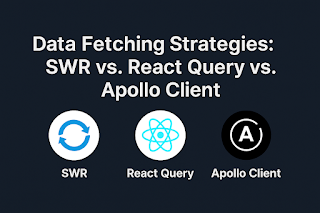WebAssembly (WASM): The Future of High-Performance Front-End
Modern web applications are more powerful than ever—but with power comes complexity and performance bottlenecks. While JavaScript has been the dominant language of the web for decades, it has its limits, especially for performance-intensive tasks like video editing, 3D rendering, and gaming.
Enter WebAssembly (WASM) — a game-changing technology that brings near-native performance to web applications. In this post, we’ll explore what WASM is, why it matters, and how it’s transforming front-end development.
What is WebAssembly?
WebAssembly is a low-level binary instruction format designed to run code at near-native speed in modern web browsers. It acts as a compilation target for languages like C, C++, Rust, and Go, allowing you to bring non-JavaScript code to the browser securely and efficiently.
// Unlike JavaScript, you don’t write WebAssembly directly.
// But here’s how you load a WASM module in JavaScript:
fetch('example.wasm')
.then(response => response.arrayBuffer())
.then(bytes => WebAssembly.instantiate(bytes))
.then(results => {
const instance = results.instance;
instance.exports.yourExportedFunction();
});
Why WASM is a Game-Changer
- High Performance WASM code executes at speeds close to native machine code, making it ideal for performance-critical applications.
- Language Flexibility Compile code from C++, Rust, and other languages to run on the web.
- Smaller Bundle Sizes WASM binaries are compact and load faster, helping improve app performance and load times.
- Interoperability with JavaScript WASM modules can be called from JS, allowing hybrid apps where critical parts run in WASM while the rest remain in JS.
- Secure Execution WASM runs in a sandboxed environment, making it safe for web use.
Use Cases of WebAssembly in Front-End
- Game Engines (Unity, Unreal) Port AAA games to the browser.
- Photo/Video Editors Enable high-performance filters and transformations.
- CAD Tools and Data Visualization Render complex 3D models directly in the browser.
- Machine Learning & AI Run ML models on the edge (client-side) for privacy and speed.
- PDF Parsers, Excel Engines, and Legacy Code Bring powerful offline capabilities to web applications.
When Should You Use WASM?
Use WASM when:
- Performance is critical.
- You want to reuse existing C/C++/Rust code.
- JavaScript isn’t fast or efficient enough for the task.
Avoid it when:
- Your app is simple and doesn’t need the overhead of compilation or WASM tooling.
The Future is WASM
With growing support from browsers, frameworks (like Blazor, Emscripten), and the WebAssembly System Interface (WASI) expanding capabilities beyond the browser, WASM is not just for the web—it's for the future of cross-platform development.
Have you tried using WebAssembly in your front-end stack? What use case are you most excited about?
#WebAssembly #WASM #FrontendPerformance #WebDevelopment #JavaScript #RustLang #CPlusPlus #Blazor #TechBlog #ModernWeb #WebTech #WebOptimization #FrontendTech #DeveloperJourney




Comments
Post a Comment